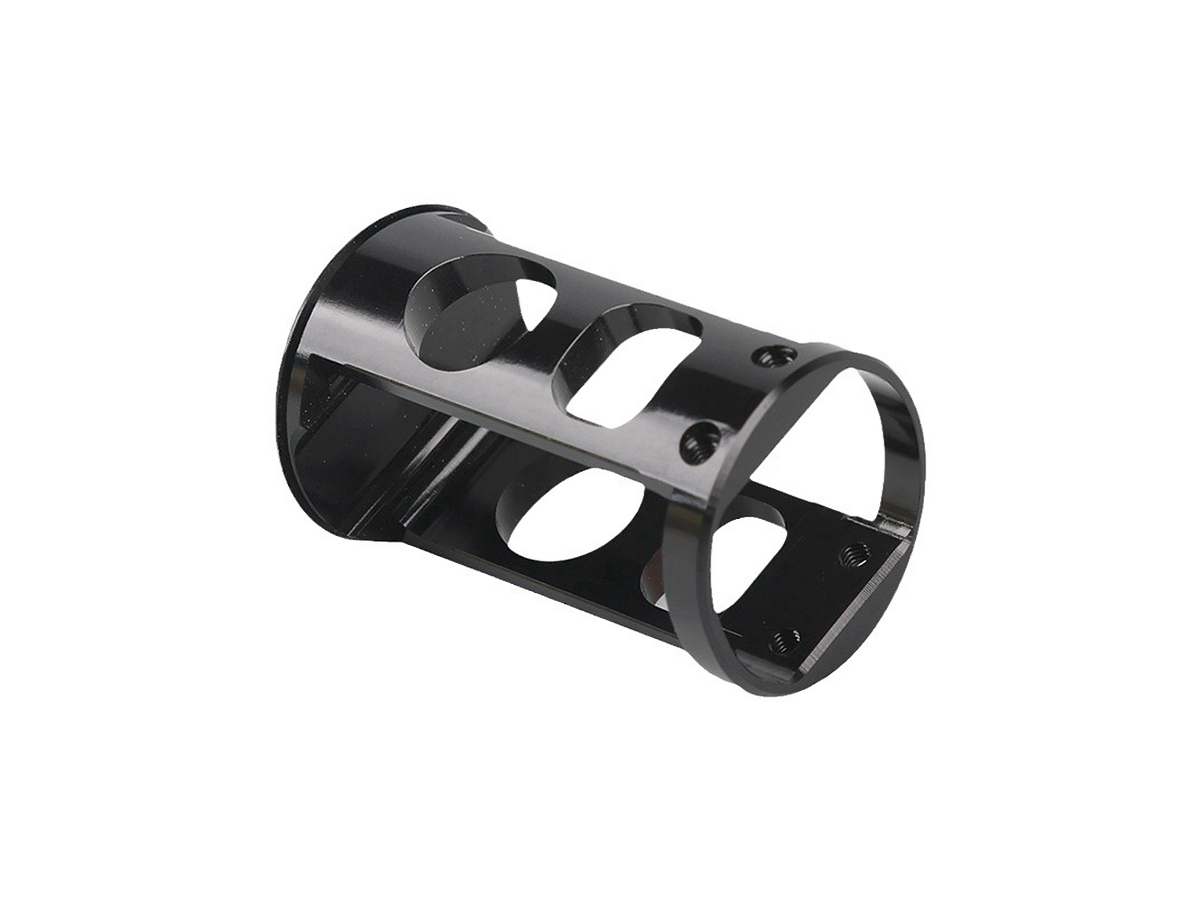Plastic Parts for Industrial Equipment: How Multi-Axis CNC Machining Improves Efficiency
Introduction
The industrial equipment sector increasingly relies on high-performance plastic components due to their lightweight properties, excellent chemical resistance, and versatile mechanical characteristics. Plastics such as PEEK, Nylon, and Acetal (POM) have become essential in manufacturing precision gears, wear-resistant bearings, seals, housings, and insulation components, significantly improving equipment efficiency and longevity.
Advanced multi-axis CNC machining has enabled precise fabrication of complex plastic parts, achieving strict dimensional tolerances, smooth surface finishes, and intricate geometries. Employing CNC machining for plastic components directly enhances performance consistency, reduces downtime, and drives greater operational efficiency in industrial machinery.
High-Performance Plastic Materials
Material Performance Comparison
Material | Tensile Strength (MPa) | Flexural Modulus (GPa) | Operating Temp (°C) | Typical Applications | Advantage |
|---|---|---|---|---|---|
90-100 | 4.0 | Up to 260 | Bearings, gears, seals | Exceptional chemical resistance, high temperature stability | |
75-90 | 3.0 | Up to 120 | Bushings, gears, wear pads | High mechanical strength, good abrasion resistance | |
65-80 | 2.5 | Up to 100 | Precision gears, rollers, fittings | Excellent dimensional stability, low friction | |
40-50 | 0.7 | Up to 80 | Liners, guides, wear strips | Superior impact strength, high abrasion resistance |
Material Selection Strategy
Selecting appropriate plastics for industrial equipment components depends on precise application requirements:
Components operating at elevated temperatures up to 260°C and in chemically aggressive environments benefit from PEEK due to its superior chemical resistance and mechanical performance (tensile strength ~100 MPa, flexural modulus 4.0 GPa).
Gears, bushings, and wear components requiring high mechanical strength (~90 MPa tensile strength) and excellent wear resistance under continuous mechanical loads are ideally produced using Nylon.
Precision components demanding dimensional stability, low friction (coefficient of friction ~0.2), and moderate temperature resistance (~100°C) are optimally machined from Acetal (POM).
High-impact and abrasion-prone applications like liners and wear strips requiring exceptional toughness and low friction use UHMW-PE, which has superior impact strength and excellent wear properties.
CNC Machining Processes
Process Performance Comparison
Multi-Axis CNC Machining Technology | Dimensional Accuracy (mm) | Surface Roughness (Ra μm) | Typical Applications | Key Advantages |
|---|---|---|---|---|
±0.05 | 1.6-3.2 | Basic housings covers | Cost-effective for simple geometries | |
±0.025 | 0.8-1.6 | Rotational fittings, curved guides | Enhanced dimensional accuracy, reduced setups | |
±0.01 | 0.4-0.8 | Complex gears, intricate seals | High precision, exceptional surface finishes | |
±0.005-0.01 | 0.2-0.6 | High-precision plastic components | Maximum accuracy, complex geometry achievable |
Process Selection Strategy
Choosing the suitable CNC machining process for plastic parts relies on complexity, accuracy, and application demands:
Basic components like covers and simple housings requiring general tolerances (±0.05 mm) are best suited for 3-axis CNC Milling, which is cost-efficient for straightforward parts.
Rotational or slightly complex components needing enhanced accuracy (±0.025 mm) benefit from 4 Axis CNC Milling, which reduces machining setups and improves dimensional control.
Intricate industrial gears, precision seals, and complex fittings that require high dimensional accuracy (±0.01 mm) and excellent surface finish (Ra ≤0.8 μm) are ideally produced using 5 Axis CNC Milling.
Components demanding extremely tight tolerances (±0.005 mm) and intricate designs, such as precision measurement or control devices, leverage Precision Multi-Axis CNC Machining for ultimate accuracy and repeatability.
Surface Treatment
Surface Treatment Performance
Treatment Method | Chemical Resistance | Friction Coefficient | Operating Temp (°C) | Typical Applications | Key Features |
|---|---|---|---|---|---|
Outstanding | 0.05-0.1 | Up to 260 | Seals, bearings, sliding components | Excellent chemical resistance, low friction | |
Good | 0.15-0.25 | ≤100 | Transparent covers, precision parts | High clarity, improved surface finish | |
Excellent | 0.10-0.15 | Up to 200 | High-wear fittings, precision components | Enhanced hardness, improved wear resistance | |
Good | 0.15-0.3 | ≤80 | Housings, covers, external components | Enhanced durability, abrasion resistance |
Surface Treatment Selection
Surface treatment selection for plastic components must precisely align with operational and environmental conditions:
Components in aggressive chemical environments requiring low friction (~0.05 coefficient) and high chemical resistance benefit from Teflon (PTFE) Coating, ideal for sliding and sealing surfaces.
Transparent or precision optical components requiring excellent clarity and improved aesthetics utilize Vapor Polishing, achieving high visual clarity and enhanced surface smoothness (Ra <0.2 μm).
High-wear plastic fittings and components requiring increased surface hardness and wear resistance are enhanced through Electroless Nickel Plating, improving hardness up to HV500.
External plastic covers and housings requiring moderate abrasion resistance and improved aesthetics benefit from UV Coating, offering protective and visually appealing surfaces.
Quality Control
Quality Control Procedures
Dimensional accuracy verification using Coordinate Measuring Machines (CMM) and optical comparators.
Surface roughness assessments via precision profilometers.
Mechanical property verification, including tensile strength and flexural modulus according to ASTM standards.
Chemical resistance evaluations through standardized immersion tests.
Visual inspections for surface quality, integrity, and dimensional conformity.
Comprehensive documentation adhering to ISO 9001 and industrial equipment manufacturing standards.
Industry Applications
Plastic Component Applications
Precision gears, bushings, and bearings for industrial machinery.
High-performance seals and gaskets for chemical processing equipment.
Structural plastic housings and insulation components.
Wear-resistant liners, guides, and sliding surfaces.
Related FAQs:
Why are high-performance plastics essential in industrial equipment?
How does multi-axis CNC machining enhance plastic component performance?
Which plastic materials best suit demanding industrial applications?
What surface treatments improve durability of CNC machined plastic parts?
What quality standards apply to plastic components for industrial equipment?

